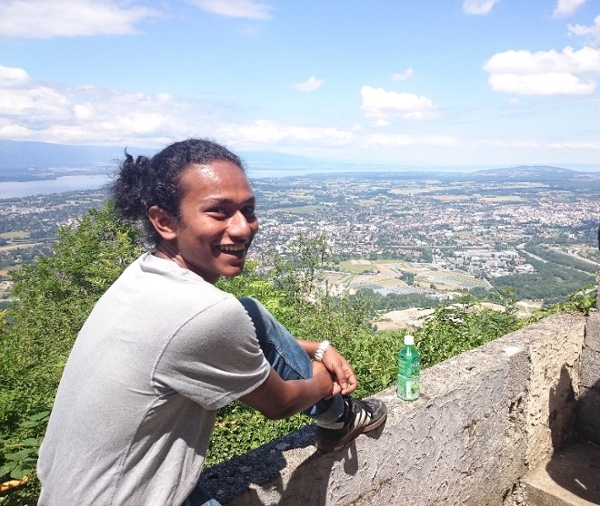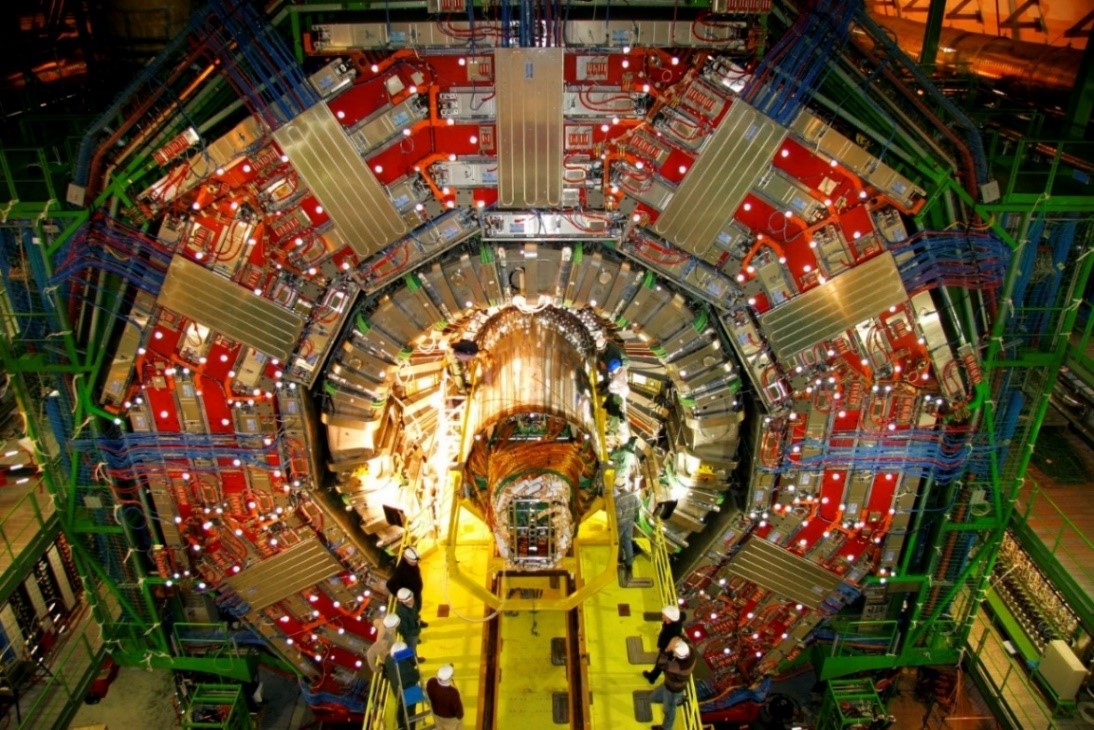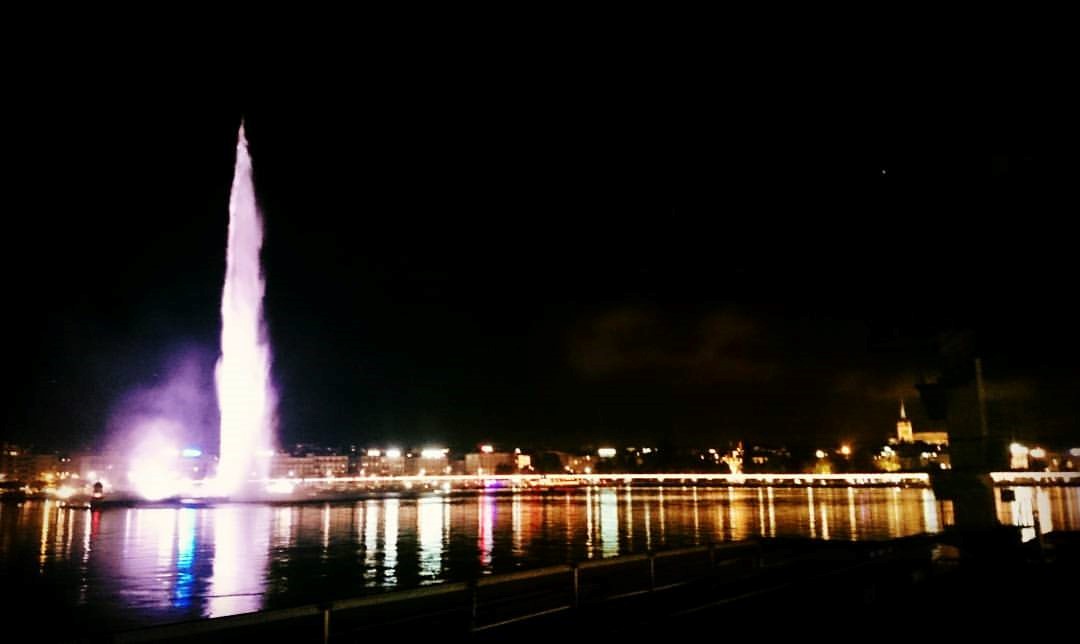PSF: Deep Learning in Experimental High Energy Physics, CERN
I am a little over halfway into my stay at CERN (organisation européenne pour la recherche nucléaire). CERN is the largest particle physics research laboratory in the world and it is spread over two countries - France and Switzerland. There is a main campus that straddles the Franco-Swiss border and there are other facilities above ground, at certain places along the 27 km circumference of the Large Hadron Collider (LHC) which runs between 75-175 m beneath the French and Swiss countryside. The aerial picture below should give you an idea of the size scale of the LHC. The underground tunnel that houses the LHC is approximately 4 meters wide, accommodating many tens of thousands of pieces of equipment. This includes magnets for focusing and directing the particle beams, and cryogenic systems needed to maintain the temperature at about -456.25○ F, which is colder than outer space! CERN is famous for a number of the biggest particle physics discoveries over the past thirty or forty years, at the different experiments that were conducted here, and the creation of the World Wide Web, among other things. In recent times, it has also come into media prominence for the discovery of the Higgs Boson, at the LHC, and misplaced conspiracy theories that generally involve CERN scientists secretly planning to destroy the world.
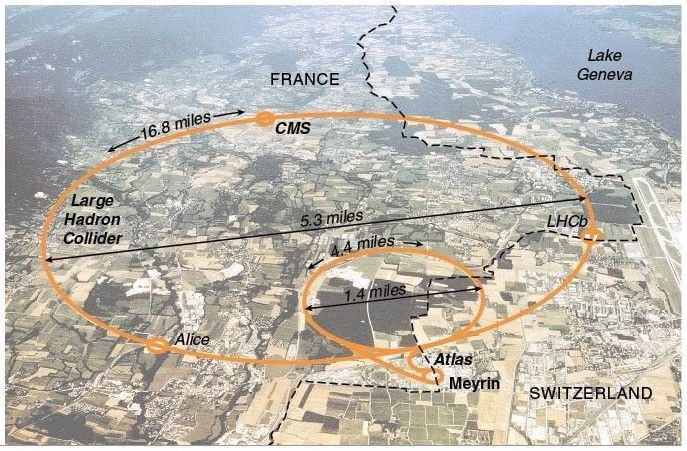
Aerial outline of the LHC tunnel
However, CERN is more than just the investments in researching physics phenomena, and constructing, improving and maintaining the particle colliders, accelerators, and other laboratory facilities. The people here are just as fascinating as any of the science that they are working on. In the summer months, a large fraction of the 13,000 or more people – users, students, research fellows, etc., associated with CERN are on site for work at the LHC and other experiments. These are some of the very best physicists, engineers and computer scientists in the world, and some of the smartest, funniest and most unpretentious people I’ve ever met. While it does get a little crowded in the summer months, it is a good time to be at CERN because of the huge influx of people from different countries and cultures, and the diversity that this naturally implies. Just sitting in the main cafeteria and talking to other summer students and researchers (including the occasional Nobel Laureate) is such a privilege because of how much you can learn from each conversation. I had never really appreciated the scale of the human endeavor that CERN is until I got here. During my time here, I have realized that no matter your title or rank, you are simply a cog in the giant machine that is CERN. However, each cog is really important! Irrespective of your age, gender identity, nationality or ethnicity, what you say and do will be taken seriously because if you are granted the privilege of working here, it is usually expected that you are capable enough to make a difference. It has been a humbling experience to work in such an environment.
I have had a lot of fun working with the Caltech group led by Professors Maria Spiropulu and Harvey Newman. I have been collaborating with a group of other summer students associated with Caltech, and my project advisers – Prof. Spiropulu, Maurizio Pierini and Jean-Roch Vlimant, to design deep neural networks that can carry out various analyses at the Compact Muon Solenoid (CMS) detector (pictured above). Given that Moore’s Law is slowing down and the amount of data being collected at the LHC will grow manifold over the next few years, we need to come up with new algorithms that can increase computational efficiency and provide enough physical precision in measurements to replace those that are currently being used. The specific problem I am tackling now is designing and benchmarking neural networks that can accurately carry out regression analyses on simulated data, which basically means training the algorithms to understand and subsequently predict the energies at which certain particles are hitting the Electromagnetic and Hadron Calorimeter (two among many sub-detectors) at CMS. By the end of the summer, we will design neural networks that can both classify particle types (decide whether the particles hitting the detectors are pions or photons) and tell us what energies these hits occurred at. We will then publish a paper on our results and another paper that will release our dataset to the public, for enthusiasts who might want to utilize it for machine learning at home with particle physics data. It has been extremely interesting to be part of this initiative that is trying both to introduce absolutely novel reconstruction techniques for scientists in this field, while also giving the public access to the kinds of tools and data we work with.
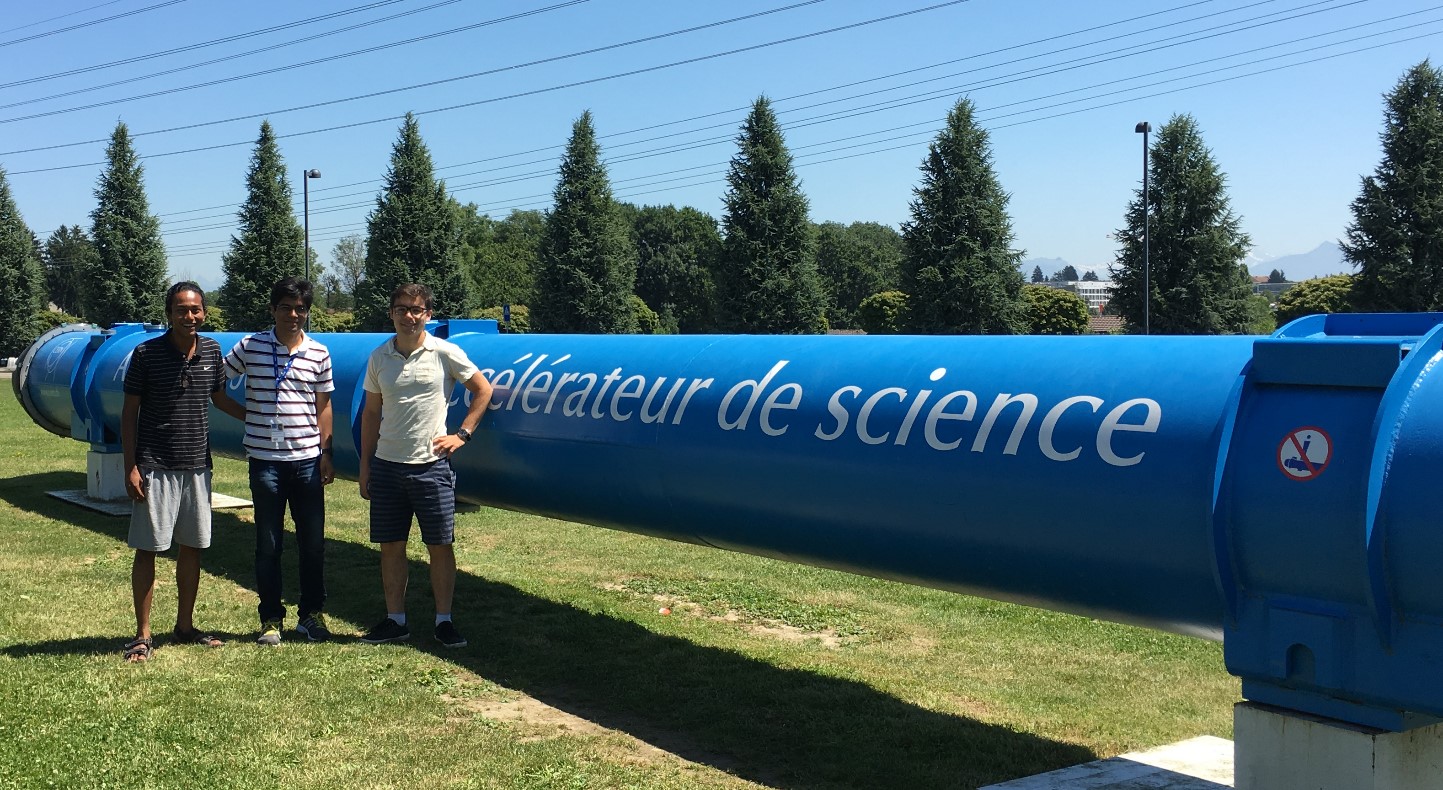
A couple of the summer students I work with - Jayesh Mahapatra (India) and Federico Presutti (Italy), in front of a section of the LHC beam-pipe kept on display in front of the main cafeteria
One of the great things about working at CERN in the summer is that there are exciting events and lectures everyday. There are workshops such as ones where you can make your own cloud chamber, a set of three advanced physics lectures a day open to all summer students, etc. There are also parties and music festivals, people playing football (soccer), making music, and so much more! It’s also great that CERN’s Meyrin campus is so close to Geneva – which is an absolutely beautiful city, with so many things to do and so much to explore. On the occasional weekends when I’m not working, I usually try to travel a bit to take advantage of being in Central Europe, where it is really easy to get from one interesting place to another. I’ve managed to travel to Lyon, Annecy (which is a really pretty little town in France) and Lausanne, among other places, and have hiked up Salève, a mountain in the French Prealps. I have also been attending some of the many music festivals that happen in and around Geneva, in the summer. One of the highlights of my stay was actually going to a guitar festival in a small town in France called Saint-Julien where I had a chance watch two legendary guitarists– Joe Satriani and Steve Vai, perform together.
This summer has been the most enjoyable of my academic career. Working at CERN is an eye-opener in terms of understanding that the greatest human strength is our ability to collaborate and pursue a common goal, such as understanding our universe at the most fundamental level. In a world where divisive discourse and actions are unfortunately becoming a regular part of our lives, this place serves as a reminder that no matter our differences there will always be unifying ideas that we can get behind, and goals we can move forward together to achieve.

